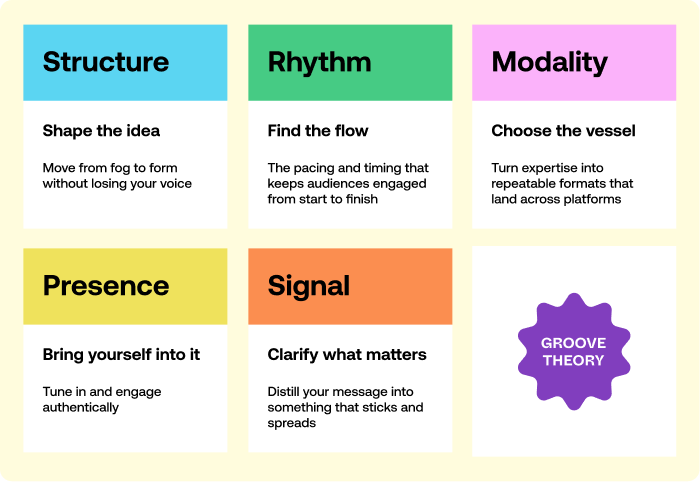Groove Theory #10 - When your song becomes someone else's
I'm your host, Howard Gray, founder of Wavetable - the experiential education studio. Currently: at JFK Terminal 5; getting back into video production
The other night, someone suggested I check out 'Challengers', the movie directed by Luca Guadagnino. But they didn’t say anything about the actual movie. The only thing mentioned was the soundtrack.
Within 20 seconds of pressing play, I knew. Even without checking, I knew it was Trent Reznor and Atticus Ross. A tennis movie soundtrack, miles away from Nine Inch Nails territory, yet their fingerprints were everywhere. The spaces between notes. The way tension builds and releases. Unmistakably them.
That recognition sent me tumbling back into the NIN catalog, where I stumbled into one of the most brutal - and beautiful - stories about creative ownership.
The Tension
In 1993, Trent Reznor was 28 and falling apart. He wrote a song in his bedroom as "a way of staying sane, about a bleak and desperate place I was in, totally isolated and alone." Raw, personal, unreachable. A young man's scream into the void. The song was called “Hurt”.

Nearly a decade later, producer Rick Rubin called with an unusual request: Johnny Cash wanted to cover it.
Reznor's response was immediate: No.
It seemed weird. The idea sounded gimmicky. But he reluctantly agreed.
When Cash's recording arrived weeks later, Reznor's reaction was visceral: "It was like someone kissing your girlfriend - it felt invasive."
This wasn't professional critique - it was gut-level violation. Someone had taken his most personal creation and inhabited it.
Step Into It
This is every creative professional's fear - even when you've said yes.
Picture this: You're giving a talk and casually mention people can screenshot the slides, use the frameworks. Generous, right?
A few weeks later you see your methodology showing up everywhere - stripped of your context, your examples, your nuance. Same structure, completely different execution. Technically you gave permission. But seeing it transformed still makes your stomach drop.
That was yours. You built it through late nights and failed experiments, refined it through real work.
How does that sit?
The Groove: Signal
Signal → Clarify what matters. Distill your message into something that sticks and spreads.
What happened next changed everything.
Reznor was in his New Orleans studio working with Zach de la Rocha when Mark Romanek's “Hurt” music video arrived.
"I pop the video in, and... wow. Tears welling, silence, goose-bumps... Wow."
In that moment, violation became revelation. Cash hadn't stolen his song - he'd completed it.
you may feel a lump in your throat...
Where the original was a young man's battle with self-destruction, Cash's version became an old man's reckoning with mortality. Same words, same melody, completely different soul.
Here's what's extraordinary: both versions work perfectly. When Reznor wrote "Hurt" as a deeply personal confession - a 28-year-old's raw battle with addiction and despair - the idea that it could work for anyone else, let alone Johnny Cash, would have seemed impossible.
Reznor realised it was time to let it go:
"I just lost my girlfriend, because that song isn't mine anymore."
The signal was so clear, so essential, that it could survive complete recontextualization and become something equally powerful but entirely different.
1. Choose real over relatable
Reznor didn't write about "what we all go through" or "the universal struggle with mental health." He wrote about his specific breakdown, his actual bedroom, his particular despair. That raw specificity is exactly what made it universal enough for Johnny Cash to inhabit completely.
Yes, it's a paradox: the more specifically real you are, the more it resonates across contexts. "Relatable" content tries to appeal to everyone and can end up meaning nothing to anyone. "Real" content is deeply personal yet can somehow speak to everyone. You don’t need to smooth the edges to be more palatable - instead, lean into what actually happened.
2. Build foundations, not fences
What if Reznor had micromanaged Cash's cover? Insisted on the original arrangement, demanded creative control, protected every musical choice? The magic would have died. Strong creative work doesn't need protection - it needs room to breathe. Stop building elaborate guardrails around your ideas. Build the core so strong it can survive being completely reimagined.
3. Trust the unexpected audience
Reznor never imagined his bedroom confession could work for a 71-year-old country legend. The audiences you can't envision might be the ones who need your work most. Create for your reality, but stay open to who else might find meaning in it.

Signal is one of the five elements of Groove Theory. Learn more →
The Release
Reznor could have fought Cash's cover. Instead, he let it happen and watched his deeply personal song become something larger than he ever imagined.
This wasn't a one-time realisation.
When Cash died seven months after the release, Reznor watched his intimate bedroom confession become a musical epitaph. "The song's purpose shifted again," he reflected.
Over the following twenty years, Reznor's relationship with the cover has kept evolving. What started as invasion became inspiration. By 2017, he was calling it "a nudge and boost and a hug from God."
The young man who felt violated by someone else's interpretation had become an artist who understood that the best creative work transcends its origins.
We're all terrified of someone "stealing" our ideas. But what if that's exactly backwards? What if the frameworks that last aren't the ones we control most tightly, but the ones we trust enough to let go?
Your signal is strong enough when others can remix it completely and it still sounds unmistakably like you.
The question isn't whether someone will take your ideas and run with them. They will.
Instead: what do you need to let go of to let your work travel?
Howard
Extended Mix: Reznor & Cash
- A YouTube comment captures it all best: "Reznor's version is a young man battling self-destructive tendencies. Cash's version is an old man near the end of his life, looking back on past regrets."
- Cash's late-career secret: He kept the voice cracks and labored breathing in his recordings instead of editing them out. He turned frailty into power, making his mortality part of the performance rather than something to hide.
- Reznor & Ross: Building an unmistakable signal across genres is a rare skill. Whether it's industrial rock, a tennis movie soundtrack, or the score for “The Social Network” (created by feeding piano melodies through broken electronics), their fingerprints are instantly recognizable. That consistency across wildly different contexts? That's what happens when you build foundations, not fences.
No spam, no sharing to third party. Only you and me.

Member discussion